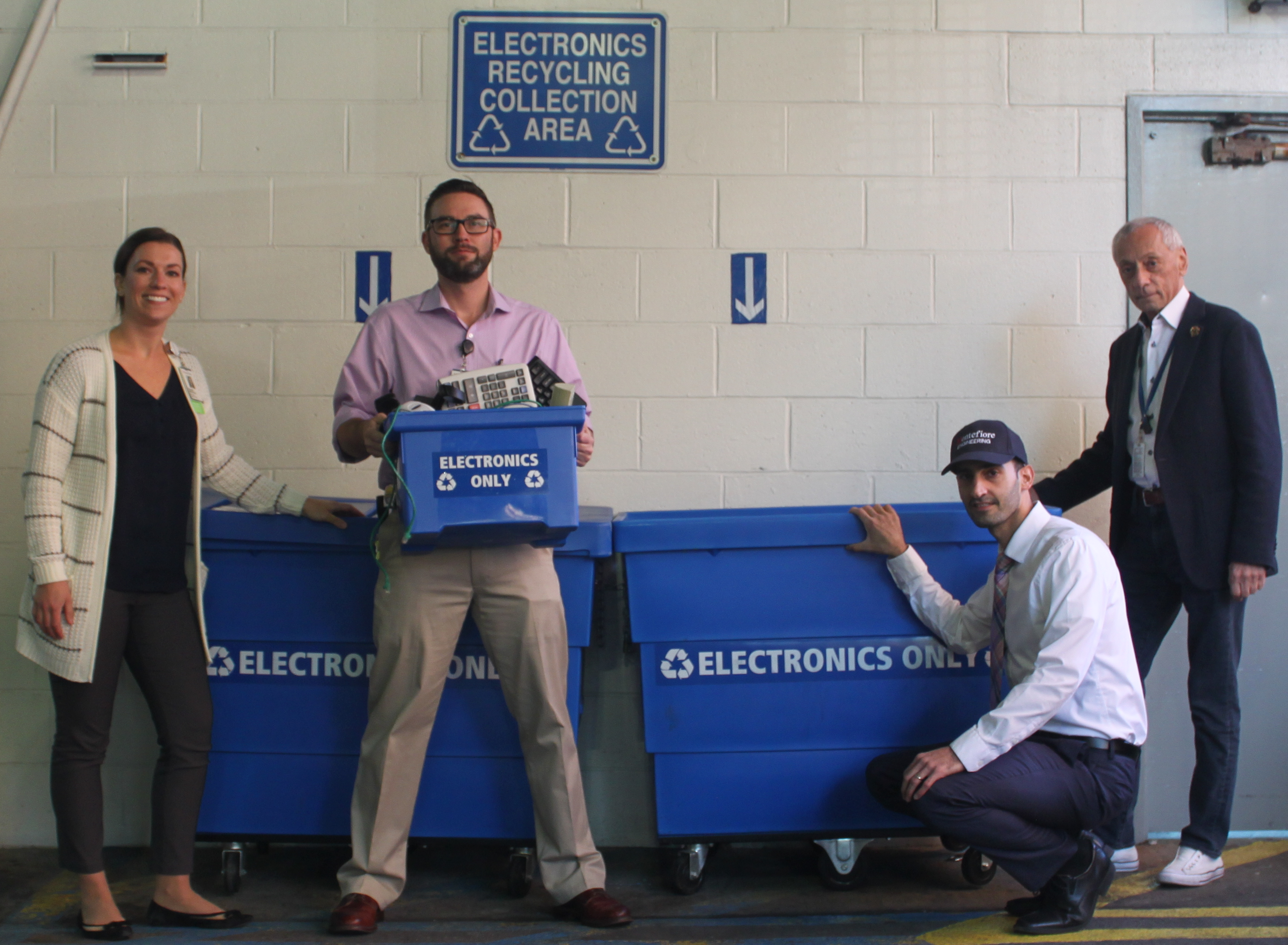Montefiore shares tips for reducing e-waste & GHG emissions while saving money

|
Michael MatosMichael Matos, green initiative liaison for Montefiore Health System, has 15 years of experience in healthcare and six years in waste management. He’s been responsible for creating, implementing, managing, and tracking a variety of programs and initiatives throughout the New York City health system. Matos successfully implemented several projects that resulted in significant cost savings, waste reduction, process improvement, and optimization of staff time. |
Tell us about your work at Montefiore.
Matos: I’m involved with all things sustainability, but most of my time is spent tracking, managing, and reducing waste across our seven campuses. Our sustainability program is a team of two, but we work with many more stakeholders across the system. At Montefiore, we know we have the opportunity to make a positive impact on the communities we serve, including reducing our waste. To do this, we rely heavily on the support of champions and stakeholders across many different departments.
You’ve been working on electronic waste (e-waste) for a long time. Tell us how it got started and how your relationship with Practice Greenhealth helped shape your efforts?
Matos: We started to see more electronics that were at end of life, obsolete, or unable to be repaired. We needed to find a way to capture e-waste throughout the hospitals and get it to a central disposal point. We followed Practice Greenhealth’s step-by-step approach for general waste reduction, emphasizing collaboration with key stakeholders: IT, bioengineering, telecom, environmental health and safety, design and construction. We created a zero e-waste-to-landfill standard internal guideline for our organization and developed a comprehensive definition of e-waste. For us, that includes everything from TVs, computers, and microwaves to cables, cords, components, and more. Our goal now is to divert one million pounds of e-waste from the landfill by the end of 2021.
What other partnerships were important for the success of this project?
Matos: The vendor we work with is uniquely capable of accepting the huge volume and types of e-waste we generate. Our e-waste vendor manages the pick-up and transportation of the materials at no charge. This saves us time, human resources, and money. They also provide detailed reports on landfill diversion and avoided greenhouse gas emissions.
Practice Greenhealth offers a little more background by way of sharing that the vendor is able to offer significant cost savings due in part to the New York Electronics Recycling & Reuse Act, which “requires manufacturers to provide free and convenient recycling of electronic waste to most consumers in the state.” While state rules make this possible at no charge to the generator, responsible e-waste management does have a cost in most states.
Did you run into any roadblocks? What tips would you offer hospitals or health systems that are just getting started?
Matos: Logistics were tough at first. We collect e-waste across 3.5 million square feet. This is where collaboration across departments came into play. Without our team of champions working together, the program would not be successful. For high-generating departments like IT and bioengineering, e-waste is collected in satellite collection bins. We also have larger, centralized bins for staff disposal.
I recommend:
- make the process convenient for staff by setting up satellite collection bins at the point of generation and centralized collection bins at all main disposal points
- clearly label collection bins with signage and information as to what can/cannot be placed in the bins
- work directly with e-waste generating departments to set the foundation of capturing as much e-waste as possible
- start with a “sky’s the limit” attitude. If you don’t set significant goals, you won’t get significant results

Tell us about Montefiore’s results.
Matos: Since partnering with our vendor in 2015, Montefiore has collected over 675,000 pounds of e-waste, avoided more than 1.39 million pounds of greenhouse gas emissions, and saved approximately $500,000 in avoided hauling and disposal fees. Working with our champions and adding satellite collections bins were the key to increasing the amount captured. For instance, we saw a three-fold increase in collected e-waste between 2016 and 2017.
What are you working on next?
Matos: To quote Thomas Edison, “There’s a way to do it better. Find it.” Our plan is to keep raising the bar. We have opportunities to expand current practices for e-waste reduction such as equipment reuse. We’re committed to making sure that every single associate is aware and able to participate in the program.
Join Practice Greenhealth
Practice Greenhealth is the health care sector’s go-to source for information, tools, data, resources, and expert technical support on sustainability initiatives that help hospitals and health systems meet their health, financial, and community goals.
